When it comes to Nagoya, visiting Miya Kishimen (宮きしめん) had been on my list for a long time. I originally thought the shop was located along the promenade leading to Atsuta Jingu Shrine, but I discovered it’s actually situated within the shrine grounds. The serene atmosphere of the shrine adds to the charm of the experience.
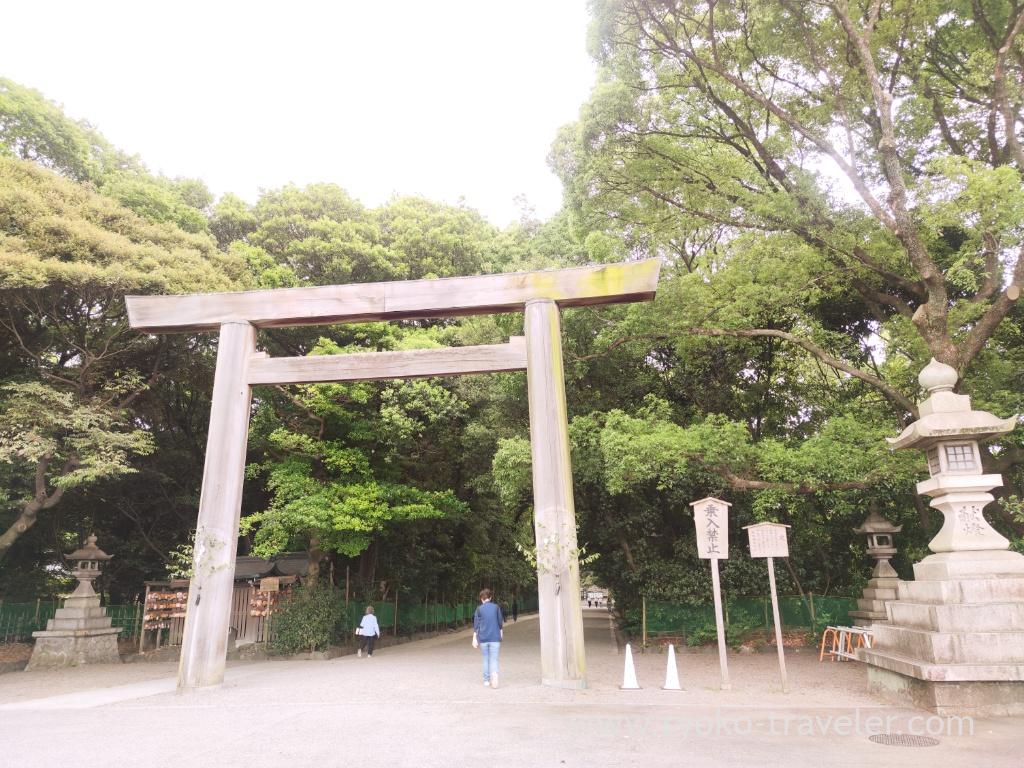
Miya Kishimen is a historic self-service udon shop, established in 1923. I had walked past it several times before, mistaking it for part of the park! Most of the seating is outdoors, with about half of the tables under a roof. It’s a relaxed setting where birds occasionally make an appearance.
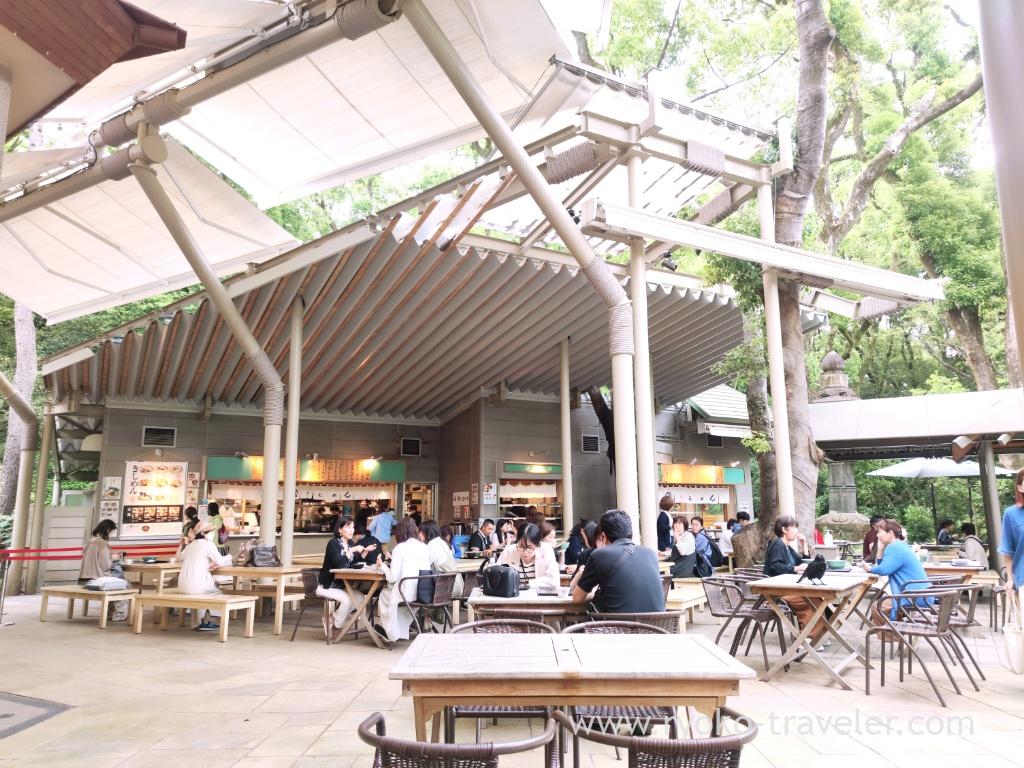
The shop operates like Marugame Udon. You order at the counter, receive your food (or a buzzer if it takes time to prepare), and pay. After eating, you return your tray to the counter. Miya Kishimen is famous for its high-quality kishimen and is also considered an “edible lucky charm” because of its connection to the shrine.
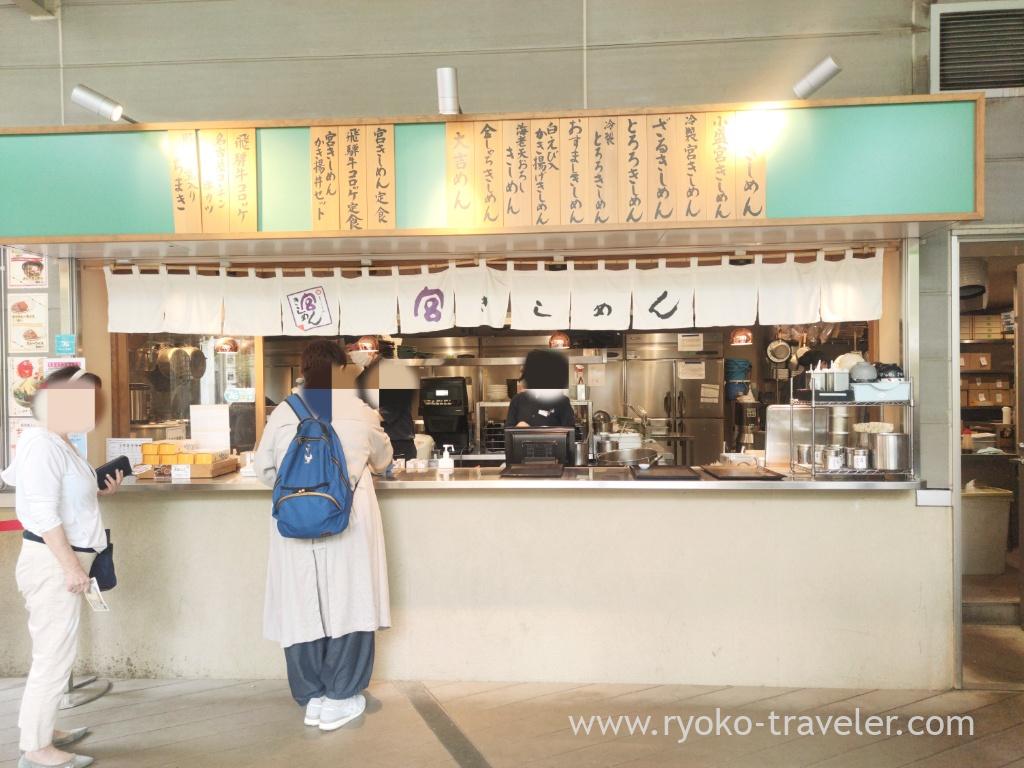
Their menu includes both hot and cold kishimen, as well as seasonal items. They open as early as 8 a.m., making it a great spot for breakfast. If you’re looking for a hearty meal, they offer sets with udon, rice, and tonkatsu for around 1,200 yen.
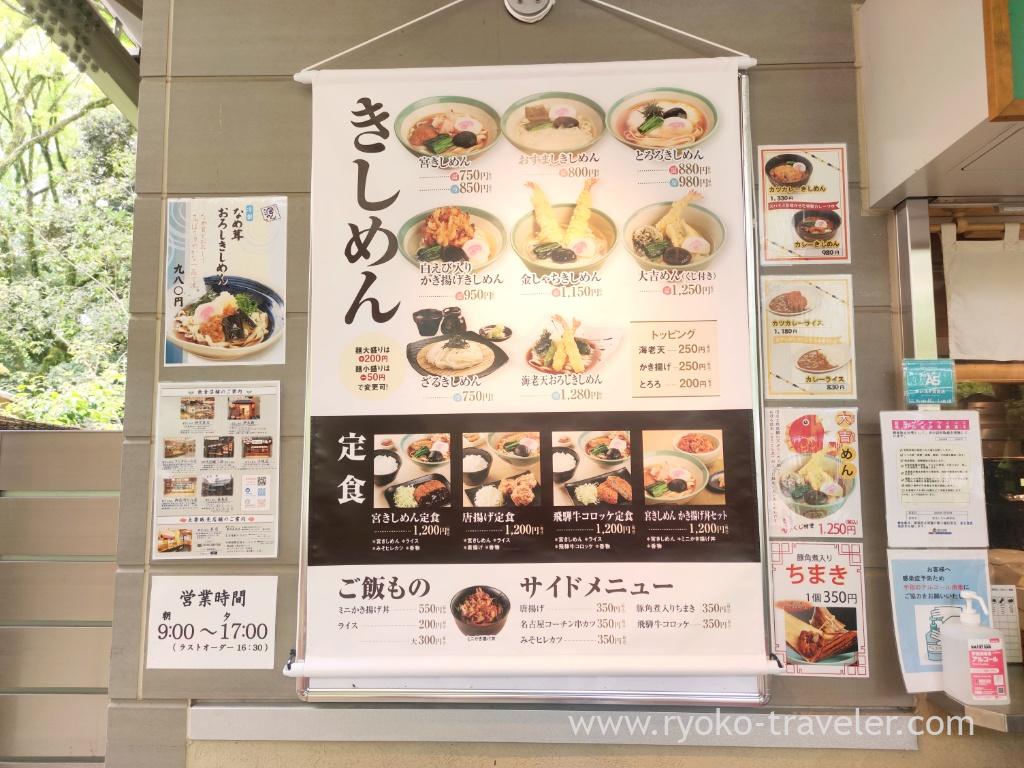
Finally, I got to try their kishimen! Eating outdoors added a pleasant touch to the experience.
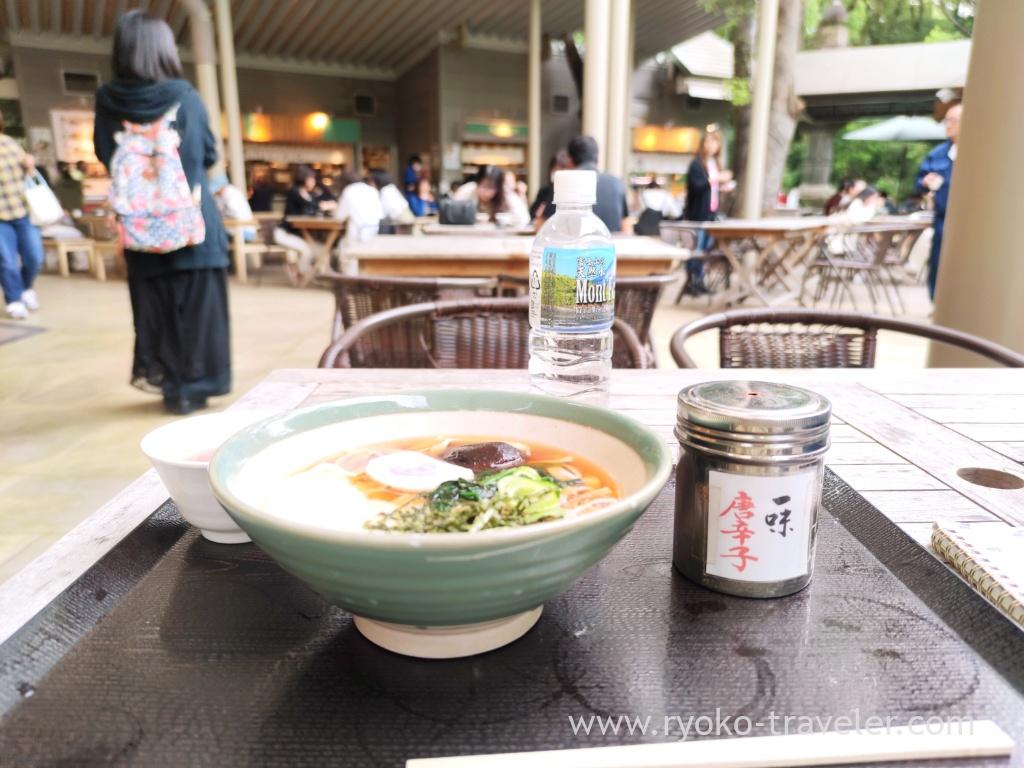
I ordered the warm Tororo Kishimen. Kishimen is a flat udon noodle, about 7–8 mm wide. This dish came topped with grated yam, seaweed, green onions, vegetables, shiitake mushrooms, and kamaboko.

The noodles had a smooth, springy texture, and the portion size was just right—not too much, even for someone who’s not very hungry.
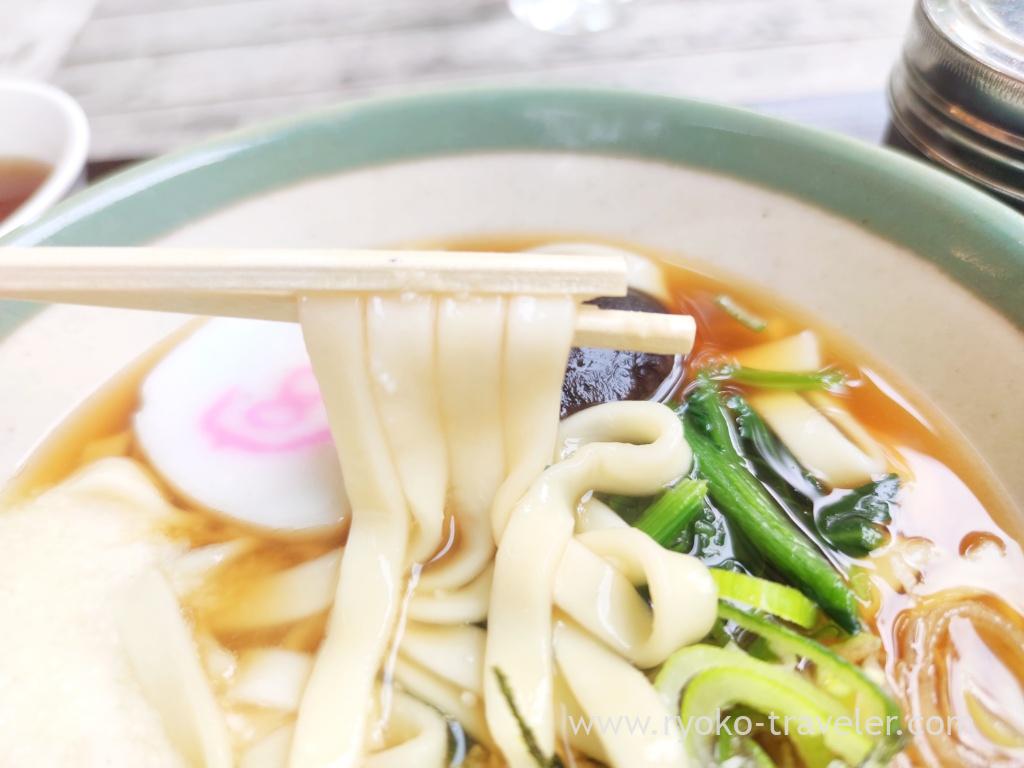
The kamaboko was stamped with the character “宮” a nod to Atsuta Jingu Shrine and its lucky charm status.
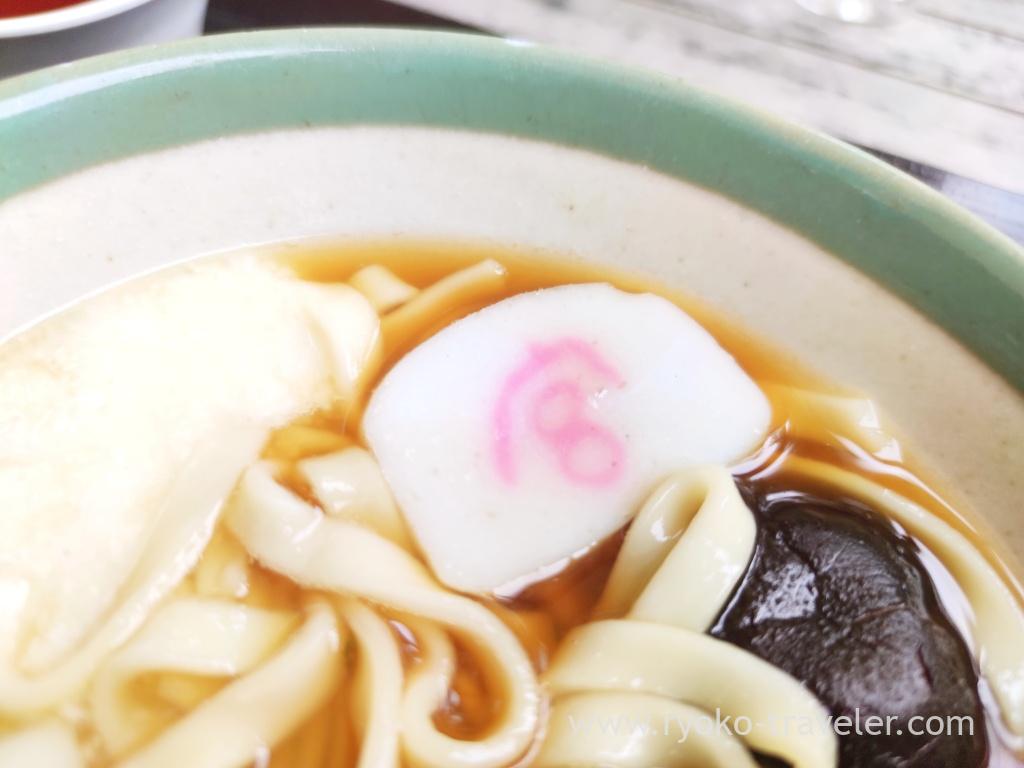
The soup was light and refreshing, not overly salty, and easy to drink. The shiitake mushroom added an extra layer of flavor. Now that I know both the location and taste of Miya Kishimen, I’m sure I’ll stop by every time I visit Atsuta Jingu Shrine!
About
Name Miya Kishimen (宮きしめん)
Open Daytime
Reservation Unavailable
Credit card Unavailable
URL Website, X (Twitter)
Google Map


